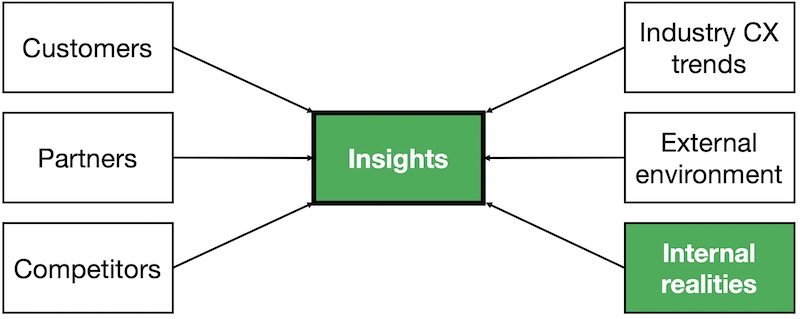Strategy: Ask new questions to get new answers – Part6 of 6: Internal realities, and conclusion
So far, the situation analysis has allowed you to dream about what you can do for customers and partners, how you will crush your competitors and how you will lead your industry. This time we move on to the internal realities in your own organization. It’s a tricky subject and can be the hardest of the six areas we have been studying. Let’s be positive: to get new answers, you have to ask new questions.
This is the fifth in a series of articles about what I consider to be the most important aspect of strategy development: an accurate analysis of the current situation and what should be done to improve it. The first article was about customers and is here. The second was about partners and is here. The third was about competitors and is here. The fourth was about industry dynamics and external factors and is here.
Questions about internal realities
While the first five areas are all about what is happening outside your company, you are unlikely to be able to sell and implement every conceivable idea within your company. These questions may help establish what you can achieve:
- What is the state of executive sponsorship for your current efforts?
- How likely are you to be to get any additional funding and people you may need to implement?
- What can you do to prove the value of your work?
- How can you secure enduring sponsorship for your work; sponsorship that will survive leadership changes?
- What current work can you stop in your own area to provide resources for new work?
- Do you have a formal talent management program in your company that you could use to staff improvement work on a part-time basis?
- What measurement and improvement systems and processes have your CEO and other key leaders used in their previous companies?
- Look at the intranet pages of your business and function leaders. Which ones mention customers as a priority and which seem to have no interest in the topic? Which ones have announced and staffed formal customer-centric initiatives?
- Have you grown by mergers and acquisitions? If so, are many different improvement systems and processes in place? Which ones seem to have the best reputations and produce superior results?
These are just suggestions
Each company is different. You need to come up with your own list of questions. Try to find at least some that you believe nobody has ever asked. My draft list is a reasonable starting place. I have tried to include questions that are about people and organizations as well as about sources of funding. The second question on the list is critical, nevertheless; if you have no hope of getting the people and other resources you need to implement a new strategy, well… you should probably change companies.
The answers lead to insights
The result of the situation analysis in each area should be a short list of insights. Each team should aim to have one to three insights and potential initiatives ready to explain and propose at the end of the analysis cycle. If a team has more than three ‘top priorities’, they have probably not put enough thought into it. As French philosopher Rene Descartes said when writing a letter to a friend (and this is often mis-attributed to Mark Twain), “Please excuse me for writing such a long letter. If I had had more time, I would have written a shorter one.”
Useful insights often take the form of “so therefore…” statements. “We looked at the industry benchmark data from Temkin Group and saw that Acme is outperforming us in this area. We believe we are stronger than Acme here, so therefore here is what we need to do…” The point is that the action proposals need to be based on data and analysis, and not on ideas that have come from thin air, with no factual basis for believing they will improve customer or partner experience. Each team’s insights and proposals will be competing with those from other teams for funding. The better supported the proposals are by fact, the easier they will be to explain and support.
Conclusion
We have now covered all six dimensions of a situation analysis and outlined how to turn the questions and answers into insights. The word ‘insight’ is a deep and meaningful word. It is not superficial. The process I have outlined should give you the depth required to decide what areas you should concentrate on and how.
Good luck!
As is often the case, the above is a substantial rewrite of part of a chapter in one of our books; in this case Customer Experience Strategy – Design and Implementation. All of our books are available in paperback and Kindle formats from Amazon stores worldwide.




